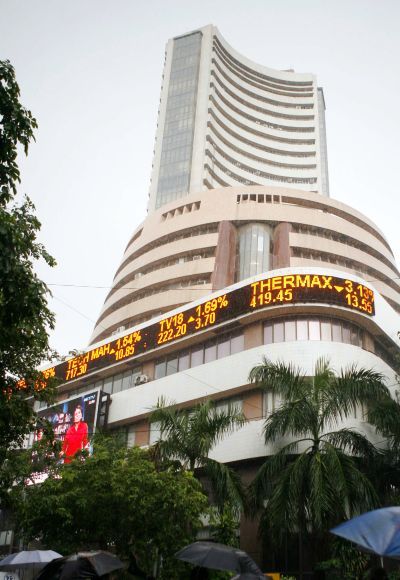 The Nifty has witnessed a major up-move since the first week of September, when the new central bank governor, Raghuram Rajan took charge.
The Nifty has witnessed a major up-move since the first week of September, when the new central bank governor, Raghuram Rajan took charge.
It had gained almost 20 per cent in two months, hitting a high of 6,343, just shy of the all-time high made in January 2008. The markets have cooled since then falling approximately five per cent.
Most investors find it very hard to understand when markets have over-extended themselves and look for data points to understand when a correction is due. In that context, we thought it would be relevant to analyse some key indicators that can serve as a guide to determine toppish market scenarios.
Please note that these data points have worked well in the past but these are not guaranteed to work in the future. Enlisted below are the points to consider:
First, one must look at the Participant Wise Open Interest data released by NSE on a daily basis. Within that, the data points to look at is the Client's Net position (Index Long - Index Short) in Index Futures.
We have renamed this data as Retail/HNI Net Position. This data has been fairly accurate in highlighting market tops in the past. History shows when this segment's net position in index futures turns negative (i.e. net short) beyond 250,000 contracts, the market typically tops out.
In the current instance, the market topped out when this number turned negative, at -270,000 contracts. Current position is still approximately -200,000 contracts, so one can assume that the correction is not over yet.
The second data point to consider is Net Position of FIIs in Index Futures. This data is contrary to the Retail/HNI data mentioned above. We observed when net position (Index Long - Index Short) of foreign institutional investors (FIIs) surpasses about 300,000 contracts the Nifty tops out.
In the current occurrence also, the market topped out when this number crossed +400,000 contracts. Since then, FIIs have been unwinding their positions and are currently long, approximately +270,000 contracts. In the past few days as FIIs have been correcting their long bias in the index, they have also been buying puts as a means of protection.
Finally, the classic Put Call Ratio (PCR) is also an important indicator. One must look at PCR in open interest terms to determine if markets are looking toppish. PCR is primarily used by traders as a contrarian indicator when the values reach relatively extreme levels.
Since May we have observed whenever Nifty all-month PCR starts to come down after surpassing 1.35 levels, market gave toppish signals. This scenario occurred thrice in the last six months. In the current scenario also, PCR levels had reached closer to 1.50 and then began to trend down signalling a correction.
Further to the points mentioned above, it is important to look at the quantum of flows that have come to our markets. Many of us only look at equity investments by FIIs. For instance, FII investments since October have touched roughly $3.2 billion leading the market to move 10 per cent.
However, the rupee has depreciated 1.5 per cent. This is because net investments in debt by FIIs for the same period was a negative $2.6 billion.
The rupee seemed to have made a strong base at around 61. My sense is the rupee could now head down to 65-66 in November. In the past five years, the currency has typically fallen by an average 2.2 per cent in November.
Numbers in isolation mean nothing but if analysed and compared historically can reveal great insights. This is precisely what we have done in our analysis above. Many experts look at numbers in isolation such as FII investments in equities and others.
Many ignore to look at the data of other participants such as the retail/HNI Index in futures or options, which have been bang on in highlighting both market tops and bottoms.
My advice is to look at these data points more regularly as they give you a broader market flavour. Based on the above data, it is sensed Nifty could still fall a further 200+ points and could arrest its fall closer to 5,800/5,825.
The author is head, sales trading & derivatives, IDFC Securities.










